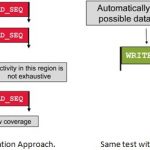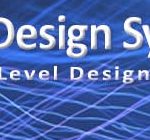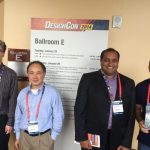We know the science fiction plot device from its numerous uses: in order to survive a journey of bazillions of miles across galaxies into the unknown future, astronauts are placed into cryogenic stasis. Literally frozen in time, the idea is they exit a lengthy suspension without aging, ready to go to work immediately on revival at their destination.
In our latest real life semiconductor drama, a tiny traveler is getting ready to awake after a journey from the pinnacle of past PC prestige into a very uncertain future on a planet observers haven’t even agreed on a name for. Some say this new terrene should be named Post-PC World, others say Wearables, more say the Internet of Things or the Internet of Everything, a few say Connected Autotopia, and still others are staking a claim with names like Makerland.
Pictured above is the platform ostensibly built to celebrate the old world: Intel Fab 42, on the West Side of Chandler AZ (“East Side, Don D in da house”). When asked recently about the decision to hold up on installing tooling in the massive facility, Will Strauss of Forward Concepts simply said:
Intel didn’t make a mistake, they just bet wrong.
If you observe Fab 42 from the point where our traveler embarked, that is somewhat true. The salad days of personal computing growth appear to be coming to an end, maybe not a precipitous one, but at least a long, slightly downhill decline. I don’t think the bet was wrong, however.
Intel certainly considered the possibility of a PC downturn, but went ahead with Fab 42 for several reasons. First, they had plenty of capital to support the investment. Second, one cannot simply build a $5B fab overnight – there are years of planning, environmental analysis, municipal infrastructure support, material logistics and construction techniques, and other details way before installing tooling. Third, Intel’s aging fabs, such as Fab 17 in Hudson MA, and Fab 11 in Rio Rancho NM, are entering retirement or slated to stay at mature process nodes, a reflection of the reality not every physical facility can be rehabbed to support advanced nodes cost effectively.
In a world nearly ready for 14nm but not exactly sure what will be economically viable to build with it, Intel decided to prep our traveler for a new mission, just in case. Perhaps not the actual parts, but certainly the idea behind them is being held in cryogenic stasis inside Fab 42, ready to awaken when some form of this future everyone says is coming actually appears in volume.
Our traveler is named Quark, a play on sub-Atomic particles that make up matter. Our story has a slight twist, because our traveler emerges from stasis not just well preserved but different, better than when it entered. Intel recognizes their legacy and future is Intel Architecture, not ARM or anything else – the blowback from one or more wearables shown at CES 2014 with “third party cores” affirms that. To be credible on landing in the new world, Intel has to build and ship Intel Architecture chips.
So, how do you take a still relatively hoggy implementation into a world currently dominated by ARM with mostly really small batteries for power in devices? The answer is a creative one from Intel’s Ireland design team. Grab the star of the PC era, the Pentium P54C at 600nm, reengineer its microarchitecture into a synthesizable core, lose the northbridge-southbridge paradigm and surround it with DDR3, PCIe, and an AMBA interconnect attaching modern peripheral IP, and shrink it to 32nm for starters. The first result: the Intel Quark SoC X1000, clocked at 400 MHz and consuming 2.2W max.
When CEO Brian Krzanich previewed the Intel Edison module at CES 2014, he teased us with a 22nm version of Quark, which back-of-the-envelope math says should be 1.5W or less, and threatened a roadmap to 14nm (but with darned few details yet) which should get them to the near-or-wee-bit-below-1W neighborhood. Yes, after years of denial, Intel may have finally figured out what “low power” actually means. A synthesizable core and AMBA interconnect means they can scale process and spin new variants much more quickly, so Quark is likely to become a family of travelers in short order.
Quark is a throwback to the lower average selling price (ASP) of the microcontroller franchise Intel created with the 8051 et al, but left for the allure of higher ASPs and margins available with complex microprocessors. As I said recently in a post on IoT semiconductor volumes, Intel has to be real careful here not to trade (relatively speaking) one $230 Core i7 for one $23 Quark in their advanced fabs – that would be absolute disaster. To win this game, they need to drive demand for Quark 10x or 20x what their microprocessor business has been in the long term.
That’s a huge order, literally; a whole lot of selling has to happen between here and there. In the meantime, Intel has the capacity, patience, and marketing might to make a push no microcontroller company can match – with Fab 42 waiting to bring Quark out of stasis like a wrecking ball when orders appear, be it from makers, wearables, the IoT, automotive, or the conglomerate known as post-PC. There are also some details, like mixed signal integration and perhaps a low-end GPU and maybe even a revisit of Stellarton with programmable logic, which Intel may want to reacquaint themselves with for success in taking on the space between the traditional MCU and the now mainstream mobile SoC.
Before getting too excited about planetary naming and gigantic projections and if Fab 42 ever really comes on line, the basic questions are: does Intel have the right idea(s), and can they win developer hearts and minds back from the ARM movement? If the technological equivalent of antidisestablishmentarianism is to succeed with Quark as the hero, it will likely start with makers and crowdfunding, smaller wins with viral potential and community buzz.
A journey of a bazillion miles starts with one step. In our next Quark installment, we’ll look at the maker angle and explore the latest on the chip architecture and Galileo and Edison modules in more detail.
More Articles by Don Dingee…..
lang: en_US








